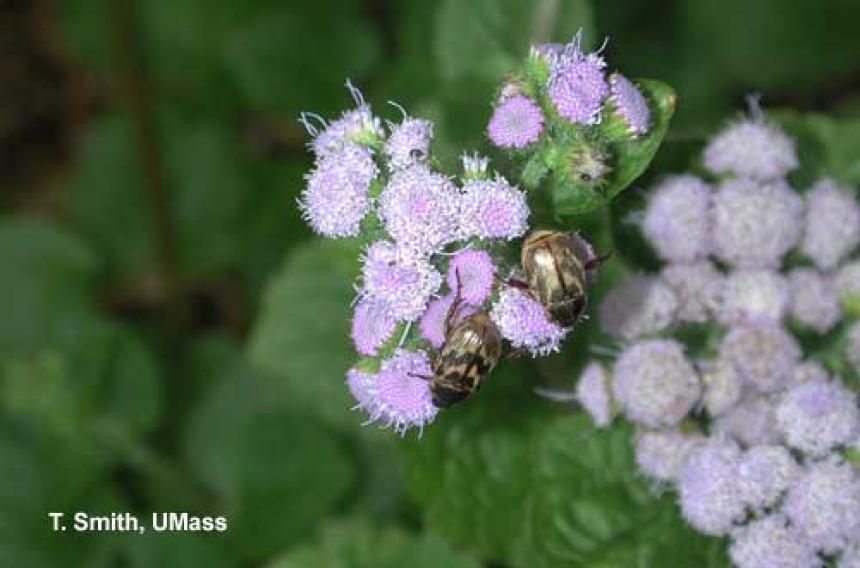Although, not a greenhouse pest, Oriental beetles can be found feeding on roses, ageratum (seen here) and other flowering plants in outdoor retail yards, cut flower fields and home gardens. Oriental beetles fly at night, but are active during the day also. The beetles are just a little smaller than Japanese beetles and usually are mottled gray with black blotches.
Oriental beetles, like Japanese beetles have a one-year life cycle. Adults emerge from the soil around the last week of June to feed and mate. The females burrow into the soil to lay eggs, usually in July. Eggs hatch into grubs and begin feeding on roots of grasses and other plants. They continue to feed until the soils cool down in September. In late fall the grubs migrated downward through the soil profile, staying below the frost line throughout the winter. In the spring as the soil warms, the grubs move back into the root zone and resume feeding. The grubs pupate (still in the soil) for about a week before emerging as adults.
Contact insecticides can be applied as soon as the adult beetles are observed. Many of the contact insecticides may be harmful to bees, predatory mites and insects. Apply grub control to larvae in grassy areas surrounding the production areas.
